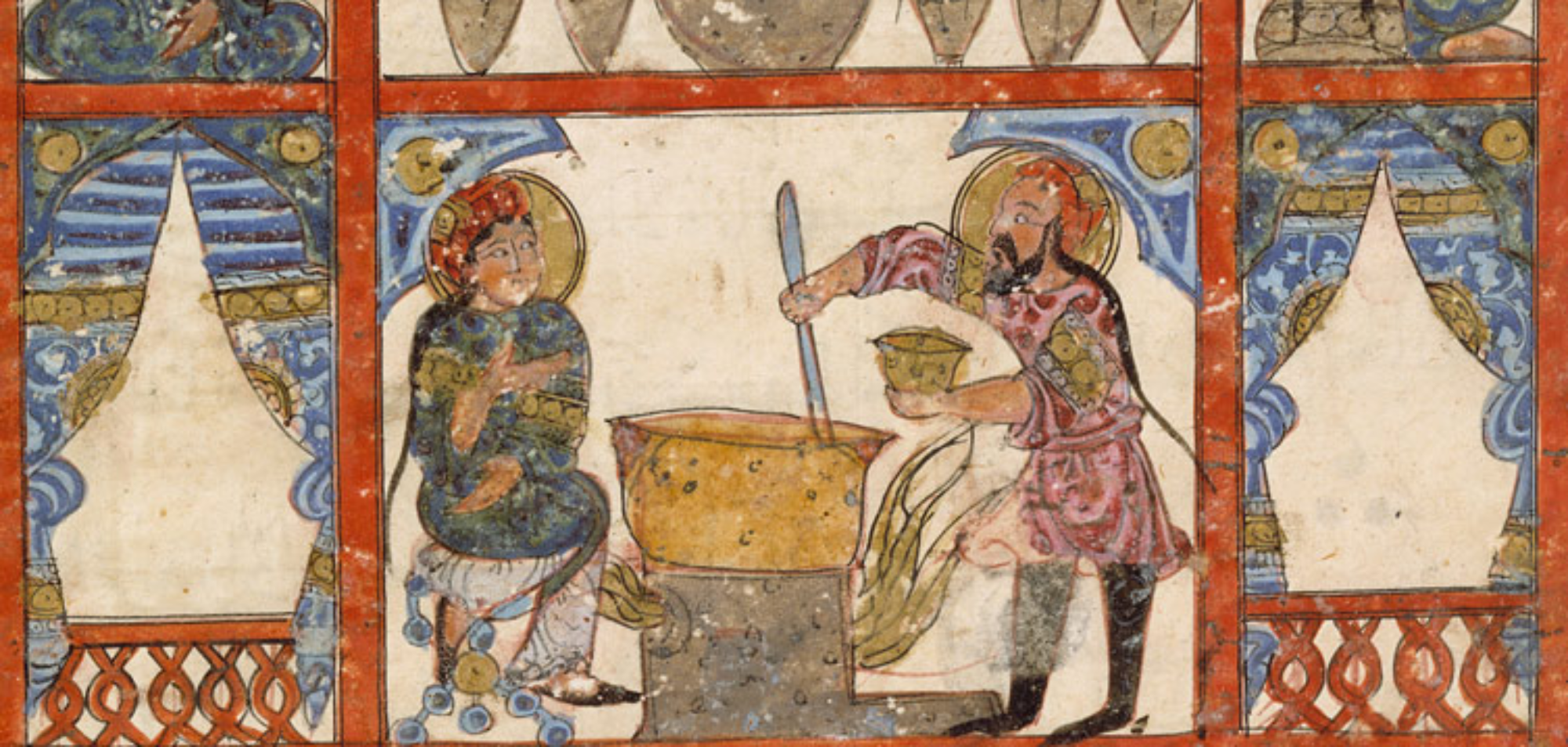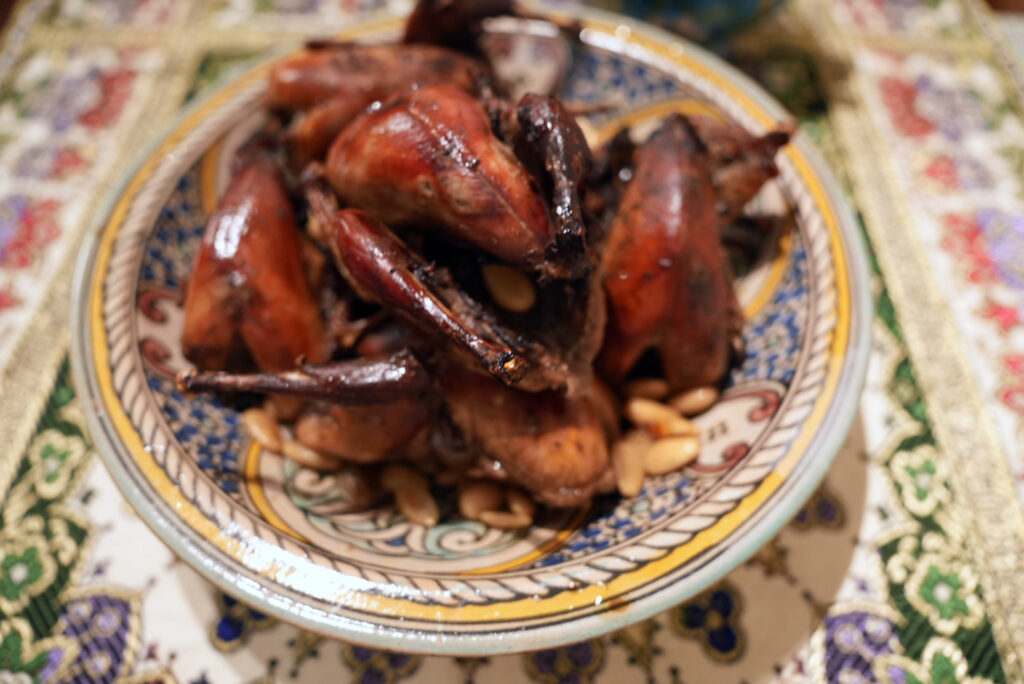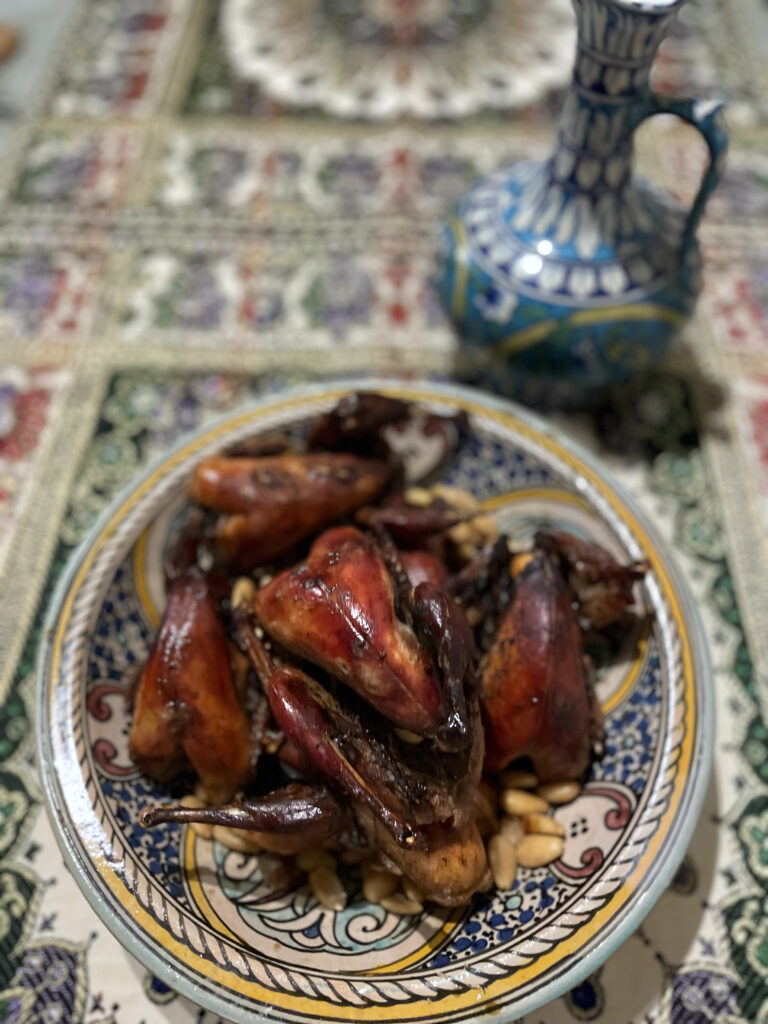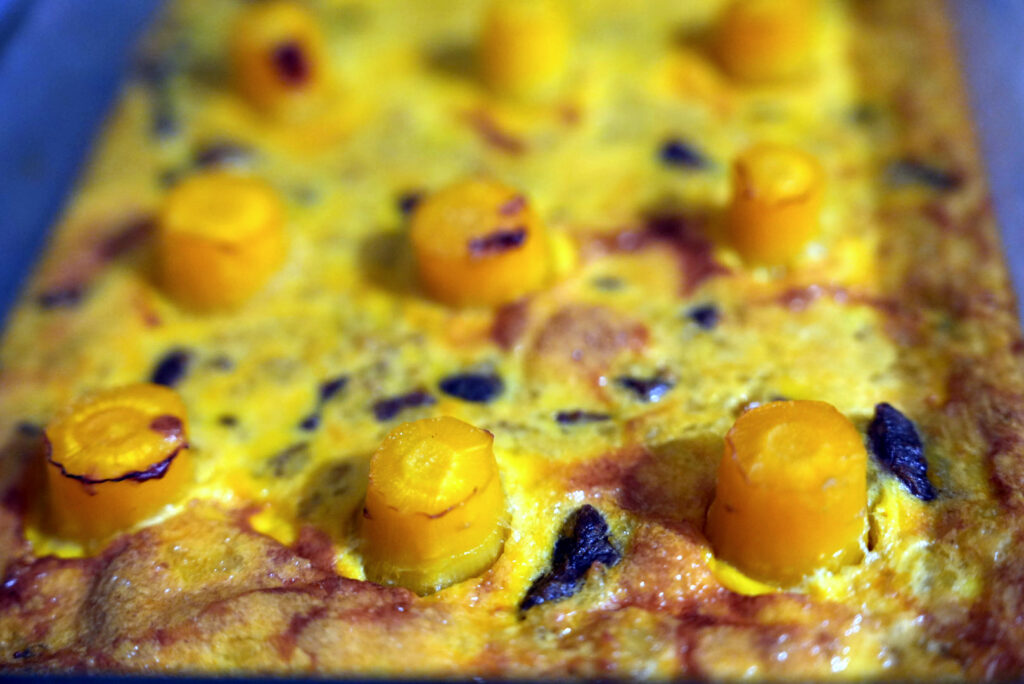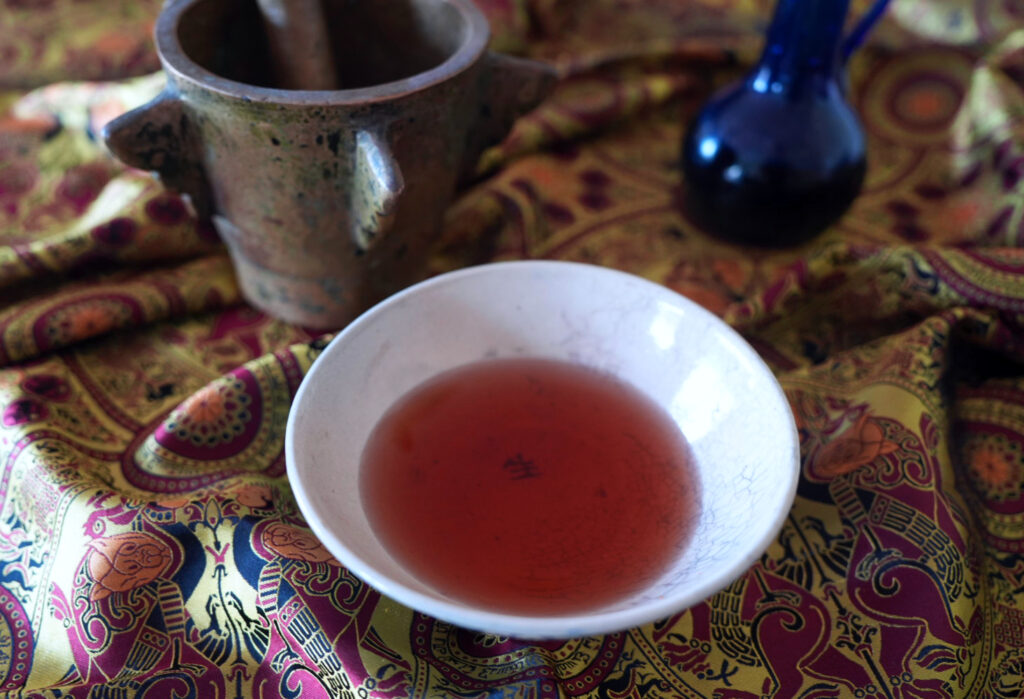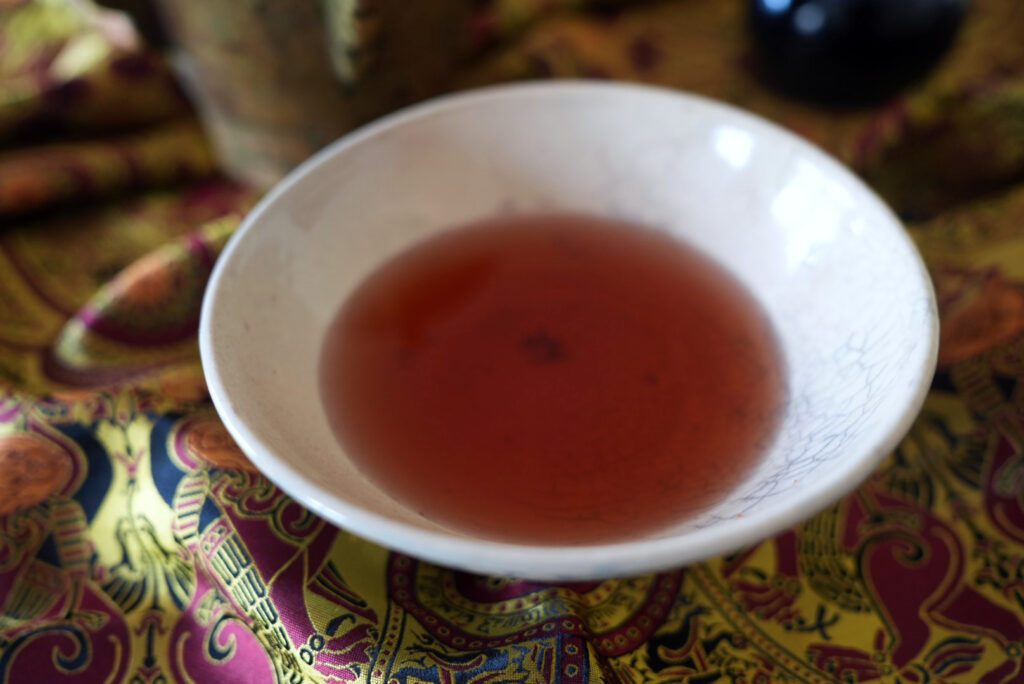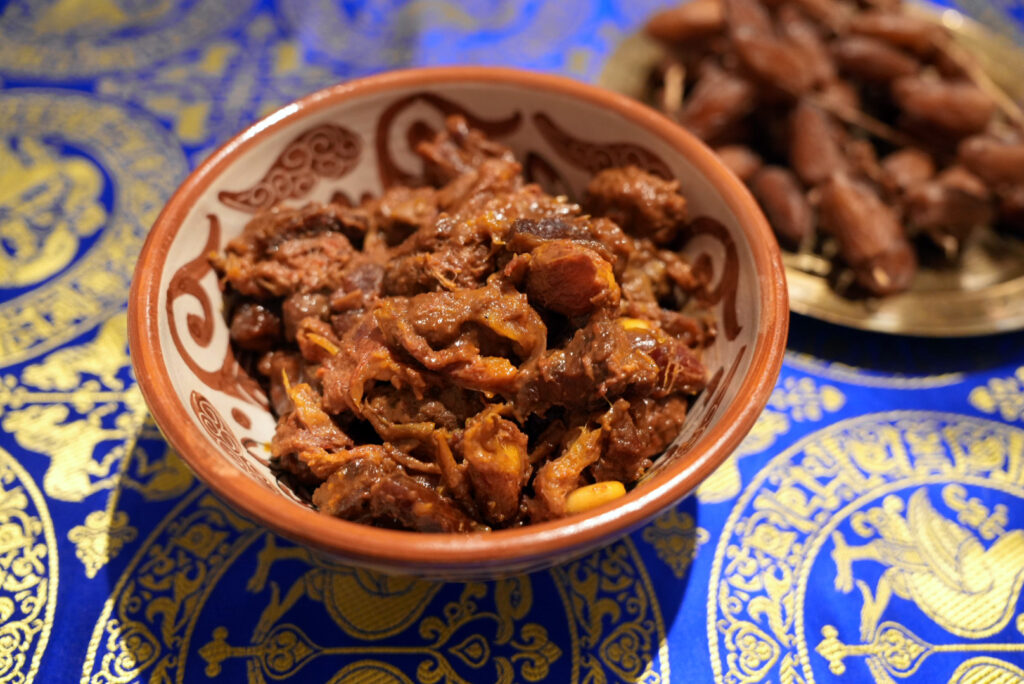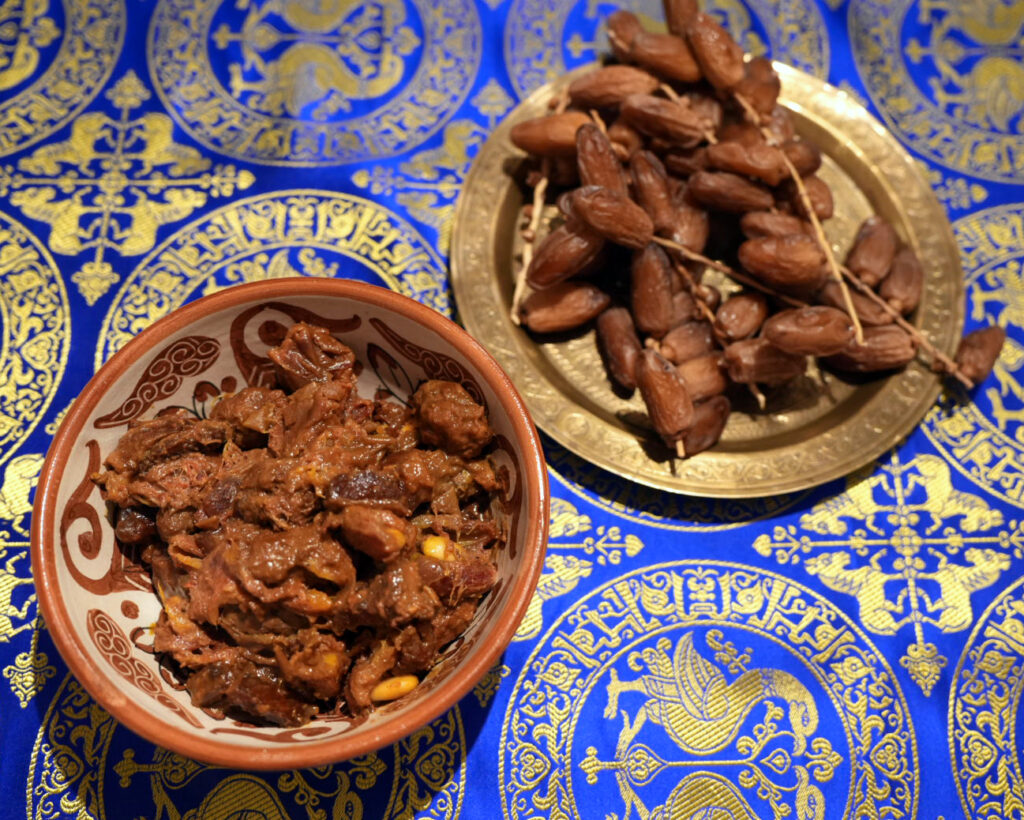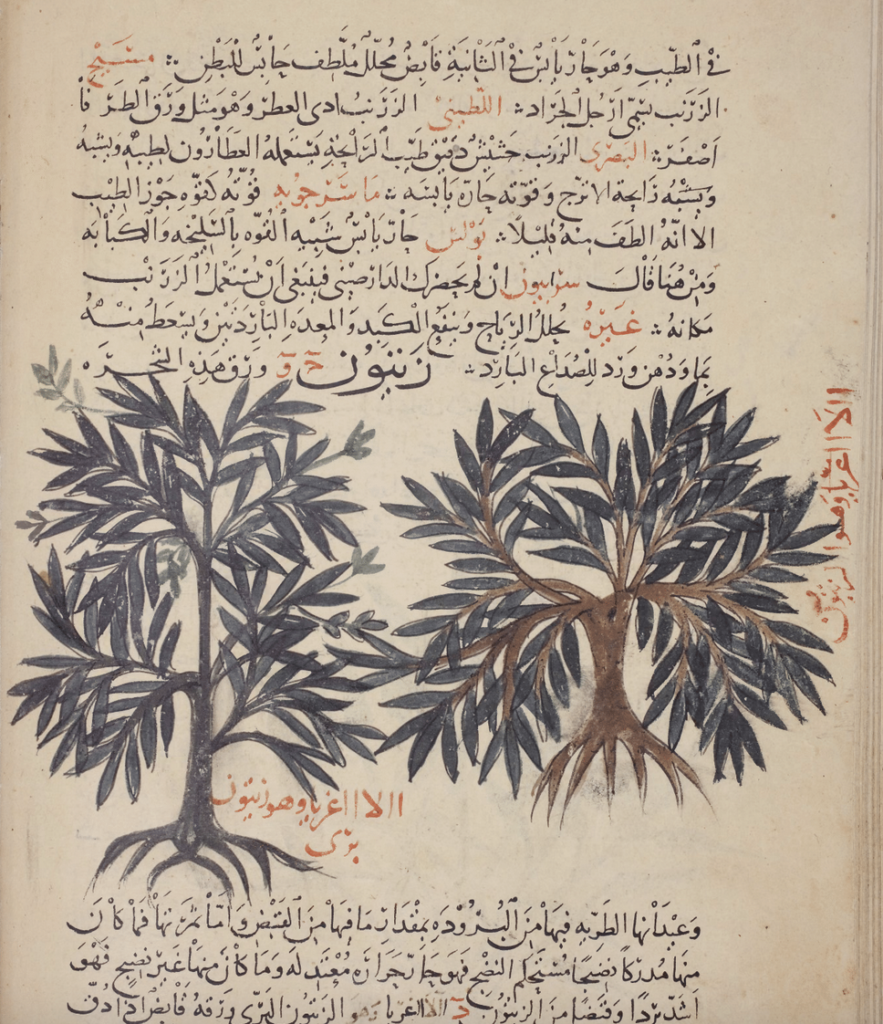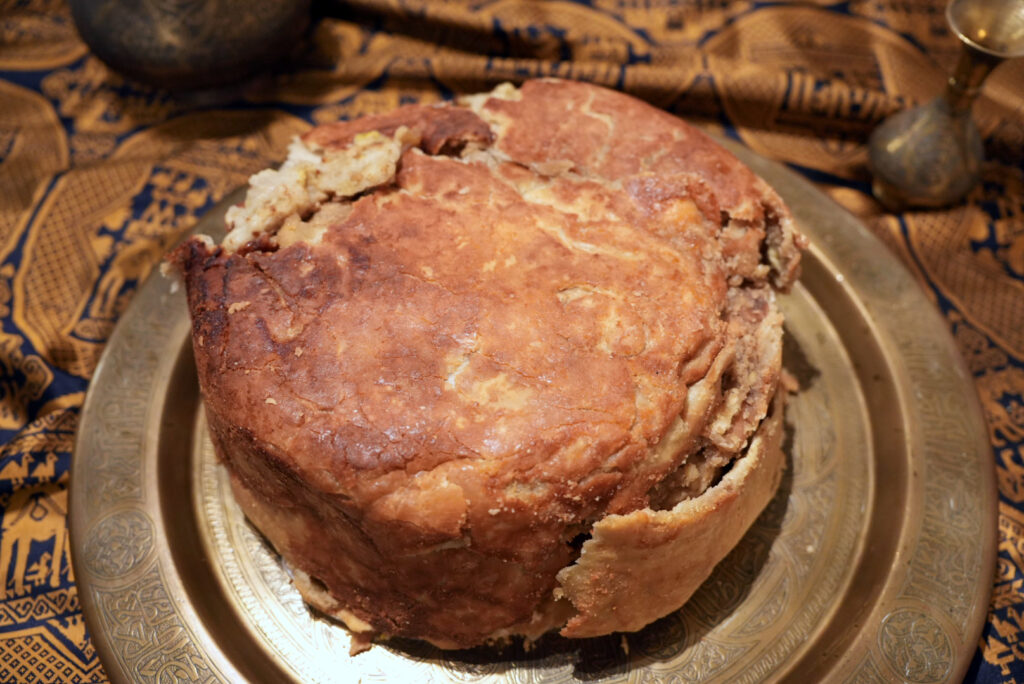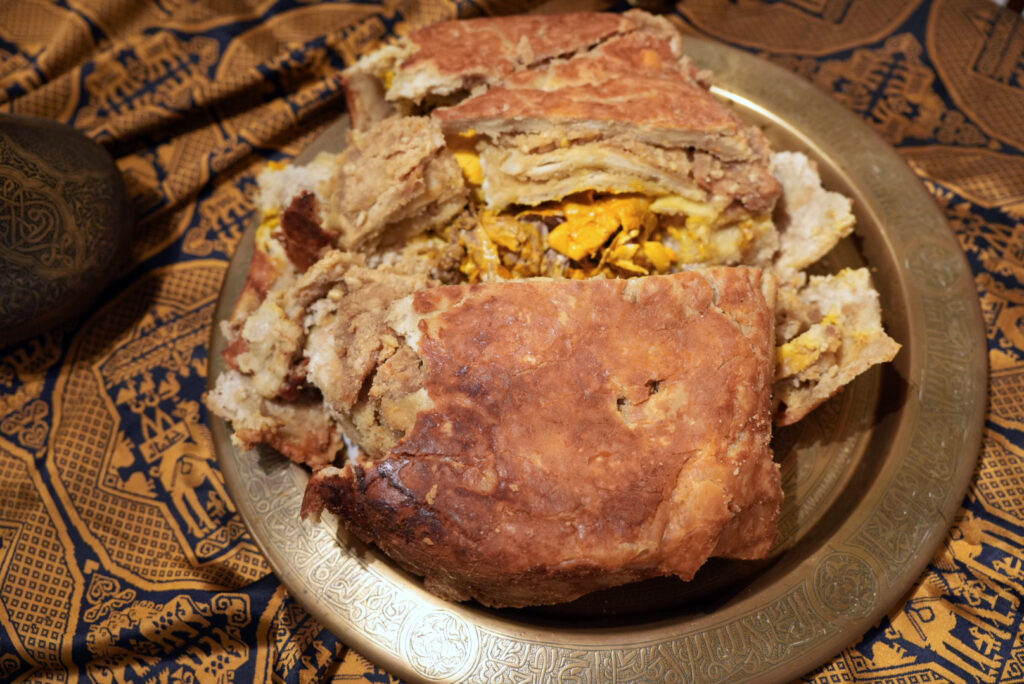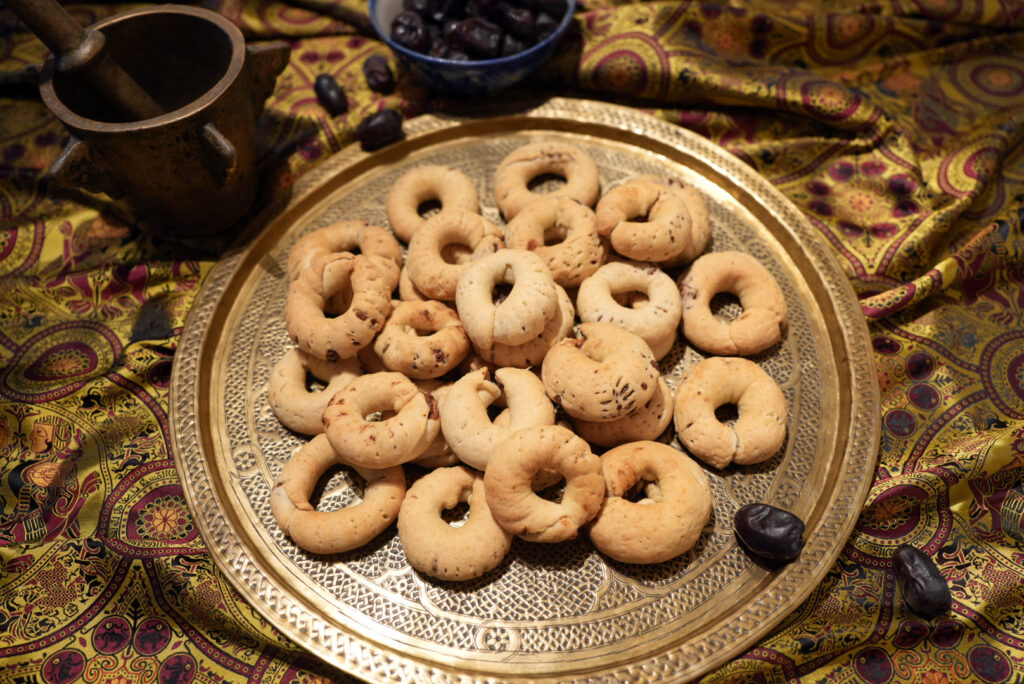This recreation of a medieval classic across the Muslim world is based on a recipe from The Exile’s Cookbook. The rice pudding (al-aruzz bi ’l-laban al-ḥalīb; الأرزّ بالبن الحليب) is made with strained sheep’s milk, though the author mentions that cow’s milk is also acceptable, with goat’s milk coming a distant third. The rice is cooked until done, after which it is time to mix in a bit of salt crushed in milk or water by gentle stirring. It is served in a dish with a bowl of honey in the middle. It should be eaten with ‘clean boxwood spoons.’ As the author of the cookbook hailed from Murcia, rice and honey from this region were used in the recreation.
There was a variant with mutton or, especially, chicken, which was, in fact, more common, and was usually known as muhallabiyya, which became the medieval European staple blancmanger. The present-day muhallabiyyas (a milk pudding made with rice or flour) are all made without meat, and thus similar to the recreation. The closest descendant of the medieval meat rice pudding is the Turkish tavuk göğsü.


